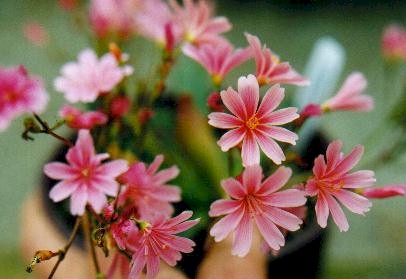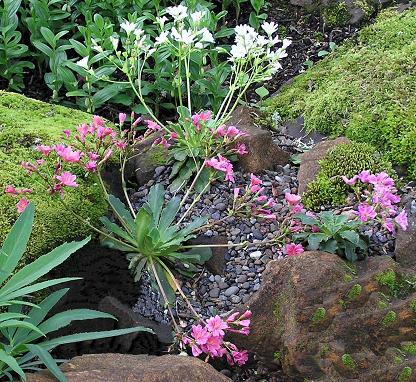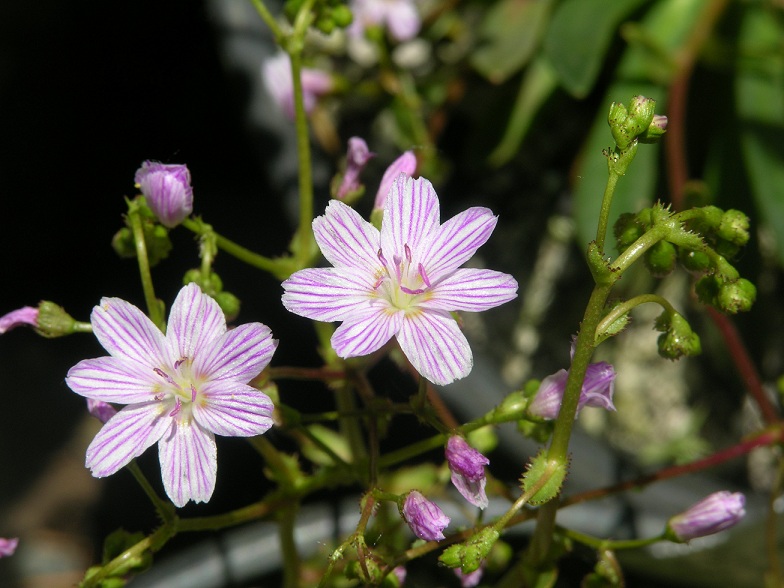|
From Homepage April 30, 2004
Lewisia
is a rock garden star that fairly shouts "Fiesta!" with it's
vibrant clusters of blooms in shades of pink, yellow, salmon, gold and
white. The leaves form a tidy rosette up to 8 inches wide and are the
base from which the stems arise to culminate in gaily striped flowers.
Celebrate Cinco de Mayo--plant some Lewisia
in your yard or take some to your favorite Mom. She'll love the easy
care and generous bloom of this fine northwest native perennial.
We cover six different Lewisias: the columbiana variety and other
columbianas rupicola (Columbian) and wallowensis (Wallowa), l. colyedon
(Cliff Maids), l. leana (Lee's), and l. tweedyi (Tweedy's). All our
Lewisia's occur in the wild in sand and gravel, up the sides of high
desert peaks and other dry areas where one would expect only
tumbleweeds. Hardy in USDA zones from 3 to 8, they'll thrive on neglect as long as
they have good drainage. They'll self-compost if forced to stand in
water.
The plant pictured above is a wonderful specimen I picked up at the nursery
several years ago. I forgot all about it, never watering or paying the
slightest bit of attention to it. It waited patiently for me all through
the summer heat and winter snow. When I came upon finally, it
fair took my breath away. What a delightful "good morning" surprise! |


